Purpose : As the number of elderly people with dementia is increasing worldwide, prevention of this disease is an important issue, so we developed a robot-based dementia prevention method. The purpose of this study is to verify whether this method can improve the scores of cognitive and psychological scales.
Method : 1. The robot was placed in households with single or only elderly people, and they talked with the robot every day.
2. Memory tasks: (1) four-character idioms*, (2) dancing, (3) recalling today’s breakfast, (4) life review, and (5) recalling last night's dinner. * Four-character idioms are traditional idioms that have been used in Japan since ancient times and are familiar to the elderly.
3. The researchers and dementia prevention supporters used to visit the residents' homes once a month to check the progress of the life review records and conduct cognitive tests at the same time. In 2020, as a measure to prevent the spread of the new corona virus, all visits and meetings were suspended, and they interacted with the elderly through the robots remotely via a computer to perform tasks, exercise checks, life review checks, and cognitive checks.
Result : There were 46 subjects, 11 males, and 35 females, with the mean age of 79.2 ± 5.25. The total score of the immediate recall test is 40 points and the total score of the delayed recall test is 10 points. Each test saw a rise in the subjects’ average scores, with the immediate recall test seeing a significant increase from 29.6 to 33.9, and the delayed recall test rising from 4.9 to 7.2 (p < 0.01). On the psychological scale, satisfaction improved from 3.2 to 4.1 (p < 0.01), vitality from 3.8 to 4.1 (n.s.), and youthfulness from 3.1 to 3.8 (p < 0.01). Regarding conversations with the robot, all participants increased the amount of conversation compared to usual. In the free description, they said that the brain training made it easier for them to remember, that the amount of conversation with the robot increased, and that the recollection brought their mind back to the time.
Conclusion : Cognitive training and life review using the robot improved cognitive test scores and increased psychological satisfaction and youthfulness. Even after they were unable to leave the house to prevent infection with the new corona virus, they were able to continue cognitive training, life review, and evaluation tests as before through telecommunication with the robot. This method is suitable for elderly people who are unable to leave the house.
Robot; Prevention of Dementia; Life Review; Remote Communication
As the number of elderly people with dementia is increasing worldwide, prevention of this disease is an important issue, so we developed a robot-based dementia prevention method. The reasons for using a robot are as follows:
- The robot can be controlled remotely from a PC or smartphone by using a remote dialogue application (Robot Phone) to check the situation at a distance and talk with the person in front of the robot. It is also possible to move the robot remotely and to check the appearance of the person on the computer (Fig. 1).
- Cognitive training and cognitive testing can be done through remote interaction to help prevent infection by the new corona virus.
- The robot can perform both cognitive training and communication, thus reducing the need for manpower.
- Place a robot in the home of an elderly person living alone will increase the amount of conversation.
- Cognitive training can be conducted at the pace of the individual subject while monitoring the subject's condition on a PC or smartphone.
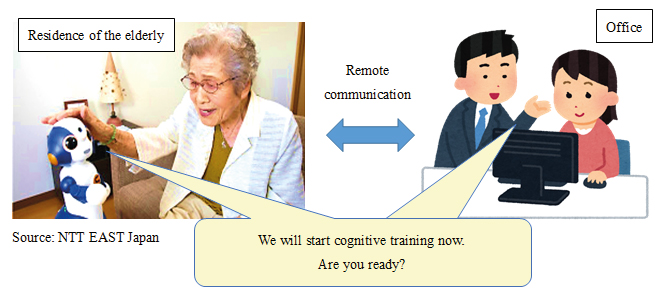
Figure 1: Remote Communication by Robot
Although the psychological effects of robot therapy through communication have been verified [1, 2], there is no accumulated evidence on its effects on cognitive functions. However, if the robot can improve the cognitive function of the elderly, the benefit will be very large for the reasons mentioned above. In our preliminary study, cognitive training conducted by the robot in the homes and facilities of the elderly confirmed significant cognitive test improvement, and improved both immediate and delayed recall test scores [3]. The content of this preliminary study was the result of a memory task and a recollection method administered by the robot.
In addition, the robot was equipped with dancing as an aerobic exercise, and the cognitive scores were improved by a program in which the elderly memorized the choreography of the robot and danced together with the robot [4]. Based on the results of these preliminary investigations, we began cognitive training in the following way.
1. The robot was placed in households with single or only elderly people, and they talked with the robot every day.
2. Memory tasks: (1) four-character idioms*, (2) dancing, (3) recalling today’s breakfast, (4) recollection, and (5) recalling last night's dinner.
* Four-character idioms are traditional idioms that have been used in Japan since ancient times and are expressed in four characters. They are used in writing tests in elementary schools and are especially familiar to the elderly.
Example: Shomon Raifuku; Happiness will come to you if you are always cheerful and keep laughing.
3. The researchers and dementia prevention supporters used to visit the residents' homes once a month to check the progress of the life review records and conduct cognitive tests at the same time, but from February 2020, as a precaution against the spread of the new corona virus, both visits and meetings were suspended.
Instead of visits and meetings, they interacted with the elderly through the robots remotely via a computer to perform tasks, exercise checks, life review checks, and cognitive checks.
As for the life review method, cognitive test scores were improved in a preliminary survey [3], and there were various psychological effects in addition to the improvement in memory recall [5]. In the life review method, the feelings of life review and nostalgia evoked when recalling autobiographical memories increased the sense of affirmation [6], and there have been cases in which the emotions generated by looking back on one's life have led to acceptance of one's life and acceptance of one's disabilities [7].
In this context, the purpose of this study is to verify the effectiveness of a method of preventing dementia by using a robot through remote communication.
Survey period: October 2019 to December 2020
Subjects: Elderly people living alone and households with only elderly people living in Nara and Hyogo prefectures. Our target audience was publicly recruited by distributing flyers to residences in the location of the two universities. One of the registration criteria was to participate continuously for one year. Participants could participate even if they had dementia or difficulty going out due to visits, but only those who could write were eligible to take the cognitive tests and psychological assessments.
Test method: The same intervention was given to all participants, and the data of the same subjects were analyzed using paired t-tests, before and after interventions. Since the psychological assessments are on a rank scale, the Wilcoxon rank-sum test, a non-parametric test, was used.
Sample size: The sample size was calculated using a statistical power of 80% and standardized difference of 0.5.
Power.t.test (power=0.8, delta=0.5, type="paired")
As a result, 34 cases were calculated to be necessary, and the target number of participants was set at 50 in consideration of dropouts during the course of the study.
Methodology: The robots will be placed in the homes of the elderly, and conversation and cognitive training will be conducted with the robots every day. The participants will record their own recollections when they have time to do so. For those who have difficulty in writing their recollections, the researchers listen to their recollections by robot remotely.
Contents: Cognitive tests: Matsui’s 10-word memory test (40 points for immediate recall, 10 points for delayed recall), Yamaguchi's code conversion test (75 points), word recall test (50 points), psychological scales; satisfaction, liveliness, and youthfulness on a 5-point Likert scale; open-ended response; and life review records.
The cognitive test is a test from the "Dementia Prevention Project Evaluation Manual" presented by the Ministry of Health, Labor and Welfare in Japan, and its reliability has been verified [8]. The Likert scale is one of the methods to measure psychology, cognition, and behaviour, and is widely used worldwide due to its high reliability [9].
The free text and life review are making sense because they are based on the actual experiences of the subjects [10, 11].
Analysis method: pre/post comparison of cognitive tests: paired t-test. Comparison of psychological scale: Wilcoxon rank-sum test. Open-ended response and life review: qualitative analysis. In the qualitative analysis, questions that could cause bias were considered in the preparation stage, and the validity was ensured through triangulation by analyzing the data with multiple participants.
Ethical Considerations: The outline of the research, voluntary nature of participation, anonymity, and agreement regarding the publication of the document were explained to prospective participants both in writing and verbally, and their consent was subsequently obtained. The study protocol was approved by the ethical review board of Nara Medical University.
Clinical Trial Registration
This study has been registered in the clinical trial registration database: University Hospital Medical Information Network (UMIN); registration number: UMIN000037209.
Although 68 people registered for the study, only 46 people continued to participate and could be compared before and after the study. There were 11 males, and 35 females, with the mean age of 79.2 ± 5.25. The results of cognitive tests: The maximum score for the cognitive test is 50 points. The total score of the immediate recall test is 40 points and the total score of the delayed recall test is 10 points. Each test saw a rise in the subjects’ average scores, with the immediate recall test seeing a significant increase from 29.6 to 33.9, and the delayed recall test rising from 4.9 to 7.2 (p < 0.01).
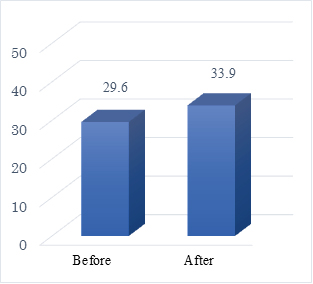
Figure 2: Before and after comparison of immediate recall
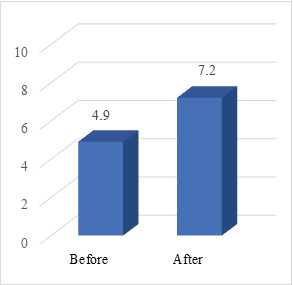
Figure 3: Before and after comparison of delayed recall
The subjects’ scores in the word recall test and code conversion test also rose slightly, with the former seeing an increase from 12.4 to 13.2, and the latter from 40.4 to 42.5. Psychological scales improved satisfaction from 3.2 to 4.1 (p < 0.01), liveliness from 3.8 to 4.1 (n.s.), and youthfulness from 3.1 to 3.8 (p < 0.01).
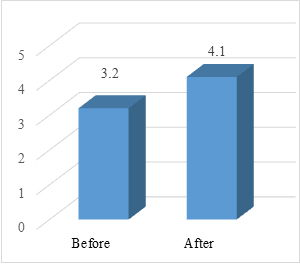
Figure 4: Before and after comparison of satisfaction
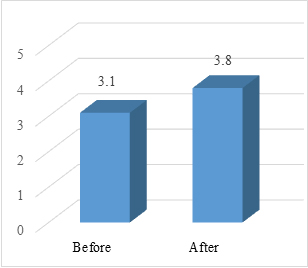
Figure 5: Before and after comparison of youthfulness
Regarding conversations with the robot, all participants increased the amount of conversation compared to usual. In the open-ended responses, they said that they looked up various four-character idioms by themselves, that the brain training made it easier for them to remember, that their memory improved, that the amount of conversation with the robot increased, that the life review brought them back to that time, that they remembered episodes that they had forgotten, that they were deeply moved when they remembered episodes with their parents and siblings, they felt comfortable and peaceful, and they were happier in the past even though they had in distress for supplies than now. Like this, there were many descriptions that the mood was changed by the reminiscence method.
The life review records were categorized into "changes in scenery around the house," "changes in daily life," "affection for the old days," "memories of outings," and "family during the period of rapid economic growth.” In the "changes in the scenery around the house" section, there was a lot of nature around the house when they were children, and it was not crowded with buildings. The mountains, the ocean, and the river all seemed big, and it was normal to play in the river every day. It's completely changed now, but they want to go back to their old house. The recollections in the "changes in daily life" section included, when they were children, there were no supplies during the war, food rations were not enough, and they shared a small amount of foods with their family. As the war intensified, they were evacuated to the countryside and had to endure difficult lifestyles. Even after the war, there was no food. When they became the junior high school students, the reconstruction gradually progressed and they no longer had to worry about food. After that, it was a period of rapid economic growth, and after marriage, men were a typical corporate warrior who never went home, and after work, going drinking until the morning was the norm. Women were left alone to take care of the house and raise the children. They looked back, saying that they had been hard for a long time, but were absorbed in it.
In the "affection for the old days" section, participants recalled their familiar life in the past, nostalgic scenes etched in their hearts, family episodes from their childhood, thoughts about their family, and nostalgic memories that made their hearts beat throb. In the "memories of outings" section, when they were children, they were mainly helping at home during the war, but during the post-war reconstruction period, they looked forward to going out for meals and shopping with the family. Since movies were inexpensive, they were able to go to the movies. When they started working, chorus cafe was all the rage, and when sang together, their spirits were lifted and the unity of the friends became stronger. Many of the elderly were nostalgic about the chorus cafe along with their memorable experiences there.
In the "family during the period of rapid economic growth" section, there were large families before the war, but after that, nuclearization of the family increases, with men coming home very late and not staying at home. Women raised their children alone, but they gradually could afford to play with their children in the park, the connection between mothers became stronger. These were the majority of the recollection record.
By place the robot in the homes of the elderly and talking to them every day, the amount of conversation doubled. The increase in the amount of conversation was the most important result of the installation of the robot, because the elderly living alone have fewer opportunities to talk, which is one of the reasons for the decline in cognitive function [12, 13]. The four-character idioms in the memory task are those that Japanese learn in elementary school and they are familiar with them from childhood. However, since they have no opportunity to use these phrases after retirement, they usually do not recall them. This time, they recited the phrases for the first time in a long time, and with a sense of nostalgia, I was able to easily recall them. Four-character idioms are thought to be easy to recall because they are phrases that were memorized in youth. It has been proven that memories from childhood to adolescence are the strongest and most recalled, and this phenomenon is called the bump phenomenon [14]. The use of familiar things was thought to be the key to memory recall for the elderly.
In addition, the combination of dance and aerobic exercise is intended to promote cerebral blood flow. Also, dance is a delayed recall task because the choreography is learned and connected little by little, and it is also working memory training, as the next choreography is carried out based on the choreography memorized a little while ago. Working memory is defined as a system that is involved in both "cognitive processing" and "retention of information being processed” [15]. In other words, it is the ability to process information while temporarily retaining it. It is a memory domain that is used in most of our daily life activities, whether shopping or driving a car, and is the key to our daily activities. Therefore, training to "retain the memory of a short time ago" was considered essential, and in fact, the subjects were aware of the improvement in their memory.
During the reminiscence session, there was a psychological effect of recalling forgotten episodes and episodes with parents and siblings, who made the subject, feel deeply moved, comfortable and calm, and we could confirm a significant rejuvenation of feelings. In the transcripts of their recollections, they recalled that the scenery of their childhood and the present were far apart, and the "scenery of home" for them was the "scenery of those days," which does not exist now, and they thought that the "home they want to go back to" is the "home with the scenery of those days.” In the category of "changes in daily life," they discussed bitter storage of food shortages in their childhoods. It is said that elderly people tend to perceive both negative and positive events in their lives with nostalgia [16], and they seemed to feel that they had overcome their hardships. After the gradual restoration, the elderly males who worked around the clock during the period of rapid economic growth took a high level of pride in the work they had accomplished, and the women took pride in having completed child rearing without help. Although they said, "All women had to put up with a lot," they seemed to understand that it was the best thing to do at the time, and thought that the reminiscence was an opportunity to confirm their bond. This is consistent with the report that people are generally more positive after reminiscing than before [17].
In the category of "nostalgic feelings," many elderly people shed tears as they vividly recalled nostalgic scenery, family episodes from their childhood, and other scenes along with their emotions. Nostalgia is considered to bring about positive emotions, such as favorable feelings toward things and actions that were familiar in the past and positive emotions that arise during reminiscence [18], and it was thought that the positive emotions were induced by nostalgic experience. In the category of "memories of outings," there was a common sentiment toward chorus cafe, which was popular when the respondents were young and the opportunities to go out increased with the postwar restoration. Chorus cafe was coffee shops that offered all customers the opportunity to sing in chorus, and were popular from around 1955 to the 1970s. With the rise of the labor and student movements, the popularity of chorus cafe, which created a sense of solidarity among people, skyrocketed. The majority of elderly people spoke with emotion about their episodes at chorus cafe, expressing that they were special memories of their younger days.
It has been reported that there is a correlation between emotion and cognition, and that the executive process of memory related to emotion does not decline even in the elderly [19] In addition, memories with high arousal, which indicates the strength and height of the emotion evoked, are thought to enhance memory by promoting the activity of the amygdala [20]. Special memories accompanied by emotions are recalled vividly because the memory is strengthened. In terms of the relationship between recollection and psychological scale performance, satisfaction and feeling young were improved, and these results are consistent with previous studies [21, 22]. There was also a significant improvement in cognitive functioning, but since cognitive training was used in combination, it cannot be said that this was due to the effects of reminiscence. However, it is believed that the use of the hippocampus, visual cortex, and language cortex in conjunction with a wide range of brain regions to describe events from the past in written and verbal form has a positive effect on cognitive test performance [23].
For the improvement of cognitive function, we combined the reported positive effects on cognitive function, such as the increased amount of conversation using the robot, the use of familiar phrases in the brain training task, and the fact that dancing combines aerobic exercise and delayed recall task and after confirming the improvement of cognitive tests in a pre-test, the program was formulated [3, 4]. During the course of the study, the novel corona virus pandemic occurred, making meetings and home visits impossible, but the robot installed in the homes of the elderly, and remote communication with the researcher's office allowed us to continue all planned programs and tests.
Regarding the continuation by the elderly, in the pre-test, the results of the questionnaire indicated that they thought the robot was cute and reminded them of their child-rearing days [3]. As a result, both the cognitive and psychological tests improved beyond expectations, indicating that remote communication with robots can be a powerful aid for the elderly in situations where they cannot go out. One of the advantages was that we could check the gestures and facial expressions of the elderly even remotely, and could proceed with the program accordingly. In particular, the advantage of being able to check the dance movements and listen to the recollections was that we could check the changes in facial expressions to see what kind of psychological state the recollections brought about.
For the elderly, psychological improvement is more important than anything else, affecting cognition and physical functioning, and influencing the length of healthy life span [24-28]. Therefore, cognitive training programs needs to be carried out in a way that can simultaneously improve the psychological health of participants. After this, we would like to further improve the cognitive and psychological support capabilities of the robot program.
Cognitive training and reminiscence using the robot improved cognitive test scores and psychologically increased satisfaction and youthfulness. The cognitive training suggested that the use of phrases that the elderly had been familiar with since elementary school led to better memory recall performance. Furthermore, the choreography of the aerobic dance exercise was intended to be a delayed recall task, which may have had a synergistic effect.
This method is suitable for elderly people who are unable to leave their homes due to the prevention of novel corona virus infection, because they were able to continue cognitive training, reminiscence, and evaluation tests as before through telecommunication by the robot.
We would like to thank all the elderly people for participating in this project. In addition, we want to thank everybody at Viston Corporation for their support in installing the brain training and rating scales into the robots.
This research received assistance from the Japanese Ministry of Health, Labour and Welfare’s dementia policy research fund.
- Hamada T, Yokoyama A (2003) Evolution of Robot Therapy. Journal of SICE 42: 756-762.
- Ozaki F (2020) The current status of elderly care robots. Japanese Journal of Geriatrics 57: 224-235.
- Sawami K, Kimura M (2020) Robots Visit Homes For Elderly People Who Have Difficulty Going Out and Practice Brain Training. EJMED 2: 1-4.
- Sawami K, Kimura M (2019) Cognitive ability and psychological effectiveness of brain training dance robot therapy for elderly people. OAJ Neuropsychiatr 1:1-7.
- Okuda J, Hashimoto A (2017) Effects of Life review Therapy Using Nostalgic SONGS on The Cognitive Function of The Elderly Living in The Community. J Nara Med Assoc 68:13-22.
- Kennedy Q, Mather M (2004) The Role of Motivation in the Age-Related Positivity Effect in Autobiographical Memory. Psychol Sci 15: 208-214. [Crossref]
- Nakao K (2015) Life History Therapy for Chronic Aphasic Patients and its Clinical Implications. The Japanese Journal of Communication Disorders 32:197-203.
- Ministry of Health (1932) Labour and Welfare. Evaluation Manual for Dementia Prevention Projects 1-28.
- Likert RA (1932) Technique for the Measurement of Attitudes. Archives of Psychology 140-155.
- Webster JD (1993) Construction and validation of the Reminiscence Functions Scale. J Gerontol 48: 256-262. [Crossref]
- Chin AMH (2007) Clinical Effects of Reminiscence Therapy in Older Adults: A Meta-Analysis of Controlled Trials. HKJOT 17:10-22. [Crossref]
- Fratiglioni L, Wang H (2000) Infuence of social network on occurrence of dementia: a community-based longitudinal study. Lancet 2113-2119. [Crossref]
- Saczynski JS, Pfeifer LA, Masaki (2006) The effect of social engagement on incident dementia: the honolulu-asia aging study. Am J Epidemiol 163-165. [Crossref]
- Jansari A, Parkin AJ (1996) Things that go bump in your life : explaining the life review bump in autobiographical memory. Psychol Aging 11: 85-91. [Crossref]
- Baddeley AD (1986) Working Memory. Oxford: Oxford University Press.
- Konno Y, Yoshikawa N (2011) The effect of the Dohsa method on life review in the elderly: The relationship between ‘recall’ of the past and ‘experiencing’ nostalgic affect. Bulletin of Human Science 233: 185-196.
- Kennedy Q, Mather M (2004) The role of motivation in the age-related positivity effect in autobiographical memory. Psychol Sci 15: 208-214. [Crossref]
- Berman H, Joyce CO (1992) A theor y of knowledge. Int J Aging Hum Dev 32: 51-57.
- Mikels J, Larkin GR (2005) Divergent trajectories in the aging mind: changes in working memory for affective versus visual information with age. Psychol Aging 20: 542-553. [Crossref]
- Hamann S (2001) Cognitive and neural mechanisms of emotional memory. Trends Cogn Sci 5: 394-400. [Crossref]
- Watt LM, Cappeliez P (2000) Integrative and instrumental life review therapies for depression in older adults: intervention strategies and treatment effectiveness. Aging Ment Health 4:166-177. [Crossref]
- Yamaguchi S (2017) Life review in Elderly People: An Examination of Their Subjective Well-being and Time Perspectives.
- Koyama K (2011) Why is "life review therapy" effective for dementia? 1-192.
- Saito M, Kondo K (2013) Different association between the loss of healthy life expectancy and social isolation by life satisfaction among older people: A four-year follow-up study of AGES project. Japanese Journal of Gerontology 35: 331-341.
- Abel EL, Kruger ML (2010) Smile intensity in photographs predicts longevity. Psychol Sci 21: 542-544. [Crossref]
- Moskowitz, JT, Epel ES (2008) Positive affect uniquely predicts lower risk of mortality in people with diabetes. Health Psychol 27: 573-582. [Crossref]
- Davidson KW, Mostofsky E (2010) Don't worry, be happy: positive affect and reduced 10-year incident coronary heart disease: The Canadian Nova Scotia Health Survey. Eur Heart J 31:1065-1070. [Crossref]
- Brummett BH, Boyle SH (2005) Ratings of positive and depressive emotion as predictors of mortality in coronary patients. Int J Cardiol 100: 213-216. [Crossref]





